Barbara Klemm Formée sur le tas dans un atelier de photographie de Karlsruhe, Barbara Klemm est engagée en 1959 par le prestigieux quotidien Frankfurter Allgemeine Zeitung, tout d'abord comme clicheuse, puis comme photographe spécialisée dans la culture et la politique, ce depuis 1970. Elle réalise alors des images en rapport avec l'actualité. Ses photos illustrent le plus souvent des évènements à valeur historique, comme sa photographie en 1973 de Leonid Brejnev chez Willy Brandt. Elle photographie également pour le supplément Voyages de la Frankfurter Allgemeine Zeitung.
Exposition Exposition Barbara Klemm au 24 Beaubourg Exposition Barbara Klemm : Photographs 1968 – 2013 Exposition Barbara Klemm presents "Light and shadow, photographs from Germany" Exposition Scenes and Traces of a Fall. The Berlin Wall in the eyes of photographers Exposition Barbara Klemm - Straßen Bilder Exposition Das Jahr 1989. Bilder einer Zeitenwende Modifier l'image
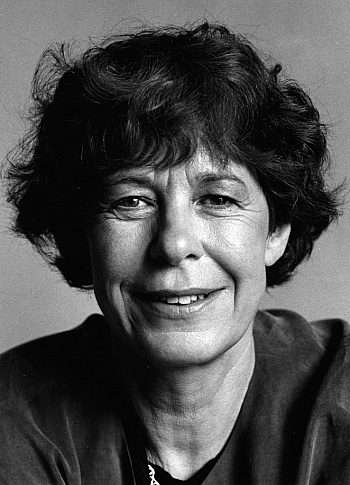 Le 24 Beaubourg accueille pour la première fois en France, une exposition de la photographe allemande Barbara Klemm. Cette exposition fait écho à la rétrospective que lui a consacré le Martin-Gropius-Bau de Berlin cette année.
Photographe de presse pendant cinquante ans, Barbara Klemm a parcouru le monde et immortalisé, par ses photographies, les grands événements politiques, sociaux et culturels qui ont marqué notre époque. À l’instar d’Henri Cartier-Bresson, « l’œil du siècle », Barbara Klemm a imposé son regard et nombre de ses photographies sont gravées dans notre mémoire collective. Elle est considérée en Allemagne, non seulement comme une grande photographe de presse, mais aussi comme une grande photographe d’art.
Une sélection de...
Le 24 Beaubourg accueille pour la première fois en France, une exposition de la photographe allemande Barbara Klemm. Cette exposition fait écho à la rétrospective que lui a consacré le Martin-Gropius-Bau de Berlin cette année.
Photographe de presse pendant cinquante ans, Barbara Klemm a parcouru le monde et immortalisé, par ses photographies, les grands événements politiques, sociaux et culturels qui ont marqué notre époque. À l’instar d’Henri Cartier-Bresson, « l’œil du siècle », Barbara Klemm a imposé son regard et nombre de ses photographies sont gravées dans notre mémoire collective. Elle est considérée en Allemagne, non seulement comme une grande photographe de presse, mais aussi comme une grande photographe d’art.
Une sélection de...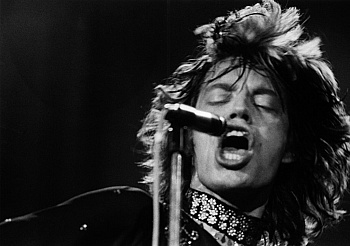 Probably no other German female photographer has followed the events of the past few decades as closely with her camera as Barbara Klemm. Her photographs show events of historic significance, encapsulating key images, turning points, and whole epochs. Now, specially for the Martin-Gropius-Bau, the famous photographer has put together a grand retrospective of her work spanning five decades and comprising some 300 exhibits covering the whole range of her oeuvre since 1968: political events, student unrest, citizens’ initiatives, scenes from divided and re-united Germany, everyday situations, and the realities of life from all corners of the earth, as well as sensitive portraits of artists, writers, musicians and visitors to the museum.
A daughter of the painter Fritz Klemm, Barbara Klemm was born in Münst...
Probably no other German female photographer has followed the events of the past few decades as closely with her camera as Barbara Klemm. Her photographs show events of historic significance, encapsulating key images, turning points, and whole epochs. Now, specially for the Martin-Gropius-Bau, the famous photographer has put together a grand retrospective of her work spanning five decades and comprising some 300 exhibits covering the whole range of her oeuvre since 1968: political events, student unrest, citizens’ initiatives, scenes from divided and re-united Germany, everyday situations, and the realities of life from all corners of the earth, as well as sensitive portraits of artists, writers, musicians and visitors to the museum.
A daughter of the painter Fritz Klemm, Barbara Klemm was born in Münst...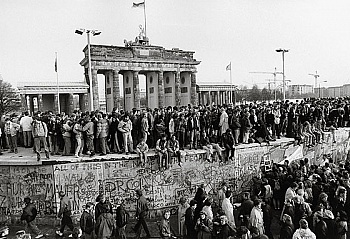 The exhibition of well know German photographer Barbara Klemm takes place at ROSPHOTO within the official program of the German Week in St.-Petersburg.
Most of the photographs on display were made for Frankfurter Allgemeime Zeitung which Barbara Klemm has collaborated with for a long time. These images are valuable not only for their certain artistic quality, but also for their historical significance. Possessing the talents most important for a press photographer, to be in the right place at the right time, and to catch the moment that later becomes the icon of an epoch, Klemm illustrates with her photographs the history of Germany from 1960s until now.
Image : Fall der Mauer, Berlin, 10. November 1989 © Barbara Klemm
...
The exhibition of well know German photographer Barbara Klemm takes place at ROSPHOTO within the official program of the German Week in St.-Petersburg.
Most of the photographs on display were made for Frankfurter Allgemeime Zeitung which Barbara Klemm has collaborated with for a long time. These images are valuable not only for their certain artistic quality, but also for their historical significance. Possessing the talents most important for a press photographer, to be in the right place at the right time, and to catch the moment that later becomes the icon of an epoch, Klemm illustrates with her photographs the history of Germany from 1960s until now.
Image : Fall der Mauer, Berlin, 10. November 1989 © Barbara Klemm
...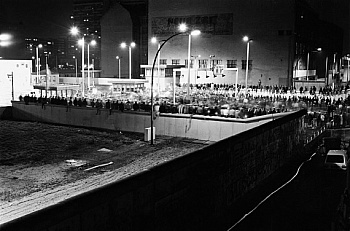 An exhibition by the Foundation Brandenburger Tor organized by Matthias Harder
On October 3, 2009, the Day of German Unity, and on occasion of the 20th anniversary of the fall of the Berlin Wall, the Foundation Brandenburger Tor in the Max Liebermann House will open the exhibition 'Szenen und Spuren eines Falls. Die Berliner Mauer im Fokus der Photographen' (Scenes and Traces of a Fall. The Berlin Wall in the eyes of photographers). This historical change is presented in an individual and, at the same time, exemplary manner in 140 works by 21 renowned photographers. The Foundation Brandenburger Tor has its seat directly adjacent to Germany' s national monument. For the Foundation it is both an opportunity and an obligation to document the fall of the Berlin Wall exactly here at this place, which formed the centre of e...
An exhibition by the Foundation Brandenburger Tor organized by Matthias Harder
On October 3, 2009, the Day of German Unity, and on occasion of the 20th anniversary of the fall of the Berlin Wall, the Foundation Brandenburger Tor in the Max Liebermann House will open the exhibition 'Szenen und Spuren eines Falls. Die Berliner Mauer im Fokus der Photographen' (Scenes and Traces of a Fall. The Berlin Wall in the eyes of photographers). This historical change is presented in an individual and, at the same time, exemplary manner in 140 works by 21 renowned photographers. The Foundation Brandenburger Tor has its seat directly adjacent to Germany' s national monument. For the Foundation it is both an opportunity and an obligation to document the fall of the Berlin Wall exactly here at this place, which formed the centre of e...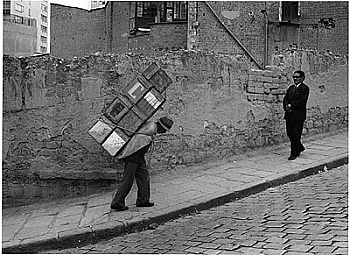 For 40 years, Barbara Klemm worked as a staff photographer for the “Frankfurter Allgemeine Zeitung” newspaper, and her pictures strongly influenced the face of that publication. A chronicler of contemporary German history, she has nevertheless traversed all the continents. She can tell stories with a single picture – with an almost unprecedented intensity and depth. Barbara Catoir has written that “Barbara Klemm is all eyes, eyes that are constantly on the lookout. She doesn’t search, she finds, she discovers that which moves her, seizes and fascinates her, that which appeals to her sense of humor and in which she can see a sign of the times. Ever since her early days as a photographer, the street has offered her the broadest and most atmospheric repertoire of motifs in terms of people, land...
For 40 years, Barbara Klemm worked as a staff photographer for the “Frankfurter Allgemeine Zeitung” newspaper, and her pictures strongly influenced the face of that publication. A chronicler of contemporary German history, she has nevertheless traversed all the continents. She can tell stories with a single picture – with an almost unprecedented intensity and depth. Barbara Catoir has written that “Barbara Klemm is all eyes, eyes that are constantly on the lookout. She doesn’t search, she finds, she discovers that which moves her, seizes and fascinates her, that which appeals to her sense of humor and in which she can see a sign of the times. Ever since her early days as a photographer, the street has offered her the broadest and most atmospheric repertoire of motifs in terms of people, land...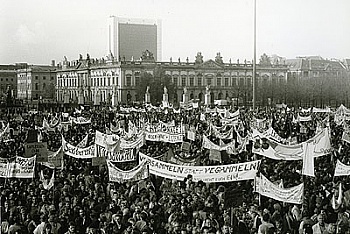 Die Ausstellung zeigt in beeindruckenden Bildmotiven die sich überstürzenden Ereignisse und bewegten Momente vom Zusammenbruch der DDR. Neben dem Blick auf die innenpolitischen Verwerfungen, die Ausreisewellen und Demonstrationen dokumentiert die Ausstellung in Pressefotos auch die internationalen Bemühungen um einen Friedensvertrag für Deutschland und den politischen Anschluß der DDR an die Bundesrepublik.
In vier Themenräumen entfaltet die Ausstellung das Panorama der Jahre 1989 und 1990. Sie beginnt mit einem Rückblick auf die "bleierne Zeit" der achtziger Jahre, führt danach durch die Chronologie der politischen Ereignisse von 1989, um dann in zwei Bereichen einerseits die Aktionen der Bürgerbewegung hin zur friedlichen Revolution, andererseits den Blick des ...
Die Ausstellung zeigt in beeindruckenden Bildmotiven die sich überstürzenden Ereignisse und bewegten Momente vom Zusammenbruch der DDR. Neben dem Blick auf die innenpolitischen Verwerfungen, die Ausreisewellen und Demonstrationen dokumentiert die Ausstellung in Pressefotos auch die internationalen Bemühungen um einen Friedensvertrag für Deutschland und den politischen Anschluß der DDR an die Bundesrepublik.
In vier Themenräumen entfaltet die Ausstellung das Panorama der Jahre 1989 und 1990. Sie beginnt mit einem Rückblick auf die "bleierne Zeit" der achtziger Jahre, führt danach durch die Chronologie der politischen Ereignisse von 1989, um dann in zwei Bereichen einerseits die Aktionen der Bürgerbewegung hin zur friedlichen Revolution, andererseits den Blick des ...